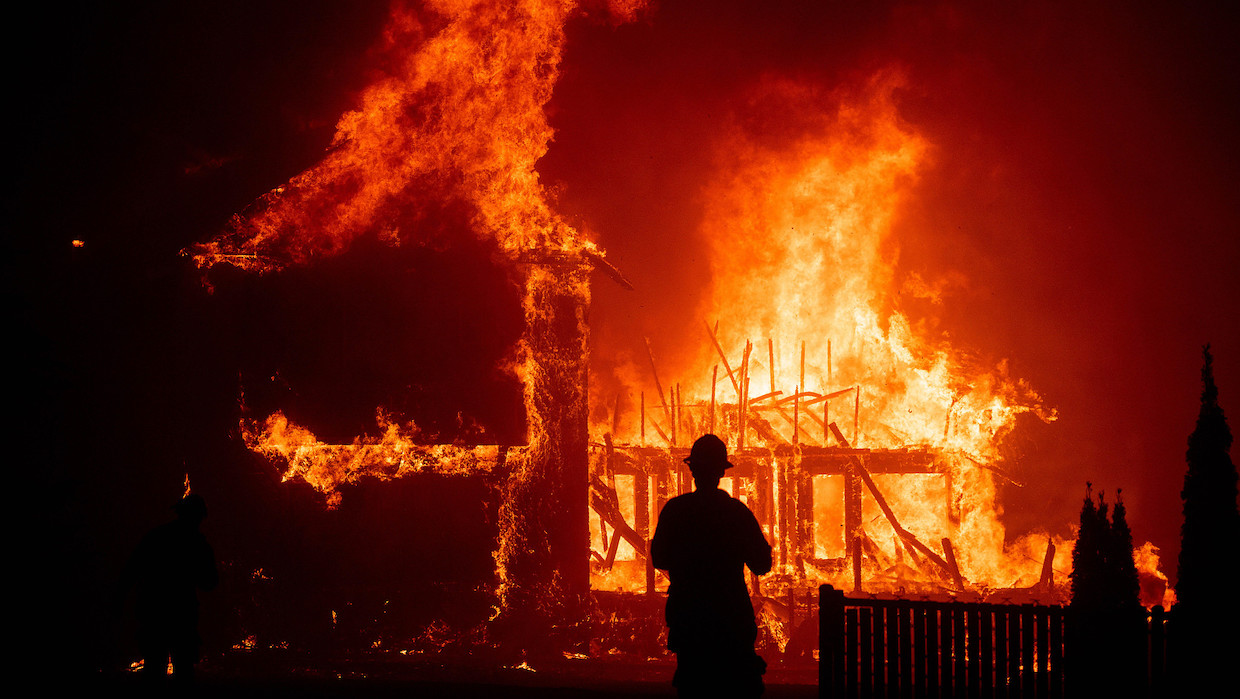 Back to selection
Back to selection
“The Physical Demands Were No Small Challenge”: DP Lincoln Else on Rebuilding Paradise
 A still from Rebuilding Paradise by Ron Howard (courtesy of Sundance Institute)
A still from Rebuilding Paradise by Ron Howard (courtesy of Sundance Institute) After a devastating wildfire nearly decimated the town of Paradise, California on November 8, 2018 and left 85 people dead, the townspeople of Paradise decided to embark on an ambitious rebuilding of the town as opposed to abandoning it. While thousands of citizens were displaced—some still effectively remaining refugees—the inherent beauty of the Sierra Nevada foothills and the strong sense of community among the remaining residence was enough to guide the community through tremendous grief and inspire hope once again. DP Lincoln Else talks about the difficulties in presenting the day of the fire and the unique challenges of shooting verité on Rebuilding Paradise.
Filmmaker: How and why did you wind up being the cinematographer of your film? What were the factors and attributes that led to your being hired for this job?
Else: I had worked with producer Xan Parker previously, and she knew my passion for verité documentary camera work. I had also worked in and around wildfire for years—shooting on other environmental docs and working for the National Park Service in a previous career (more on that over drinks), so I was intimately familiar with the subject.
Filmmaker: What were your artistic goals on this film, and how did you realize them? How did you want your cinematography to enhance the film’s storytelling and treatment of its characters?
Else: From the outset, this project was envisioned as an intimate verité film—a close quarters portrait of real people living through a life-altering tragedy. This intimate handheld camera work is what I love doing more than any other style of cinematography. We also knew the film would be using a significant volume of archival footage (cell phones, etc), and we wanted our own verité content to be distinctly more cinematic. To that end we shot the majority of the verité footage on Cooke S4 primes at an open aperture, enabling us to capture intimate moments with our characters as beautifully as possible.
Filmmaker: Were there any specific influences on your cinematography, whether they be other films, or visual art, or photography, or something else?
Else: When asked for verité references I always point to one influence—that of my father (Jon Else). Growing up as the son of a verité cinematographer I had the luxury of learning from his approach to filmmaking: his craftsmanship, and perhaps most importantly, his documentary ethics and moral compass. No film project can ultimately capture the whole truth, but a documentary cinematographer can help push each project as close as possible to that ideal.
Filmmaker: What were the biggest challenges posed by production to those goals?
Else: There’s inevitably a balance with any verité project between the time needed to capture the most compelling scenes, and the need to get the necessary elements for a larger story. This project was no different—with the added challenge of our attempt to follow a wide cast of characters through a physically challenging and emotionally exhausting experience. We also captured more hours of handheld footage for a project than any other on which I have worked—the physical demands were no small challenge, to be sure.
Filmmaker: What camera did you shoot on? Why did you choose the camera that you did? What lenses did you use?
Else: We needed a camera with a 4K native sensor, so we shot the majority of the project on a Sony Venice with Cooke S4 primes (18, 25, 40, 75, 100). While not originally designed for handheld verité camera work, the Venice offers a latitude and color space reminiscent of the Arri cameras I have most commonly used for verité work. It’s duel ISO capability was invaluable in specific instances, and its internal ND’s enabled us to maintain a shallow depth of field throughout much of the content. Happy to have a super dorky camera tech conversation with anyone interested…
Filmmaker: Describe your approach to lighting.
Else: Our approach to lighting was not to do any. I spend a good portion of my working life crafting lit scenarios, but for this project we made a conscious decision at the outset to use only available light—not only for the verité scenes, but for the interviews as well.
Filmmaker: What was the most difficult scene to realize and why? And how did you do it?
Else: Throughout the project, we struggled with the pros and cons of filming with a larger camera and heavier glass while working in challenging verité environments. Inevitably, the pros always outweighed the cons, and the content we were able to capture always justified the extra effort. Following FEMA workers as they tackle toxic debris removal after a wildfire is not usually the environment in which one finds a Venice with Cooke lenses, but it was worth it. Much of this success is thanks to our stellar AC—Dariel Medina—who somehow managed to shepherd our package through the entire project unscathed.
Filmmaker: Finally, describe the finishing of the film. How much of your look was “baked in” versus realized in the DI?
Else: The final look of the film was realized in the grade during post—we captured log content on location (with a simple Rec709 LUT), planning to establish the final look in post.
TECH BOX:
Film Title: Rebuilding Paradise
Camera: Sony Venice
Lenses: Cooke S4 (18, 25, 40, 75, 100)
Lighting: Available Light
Processing: Digital
